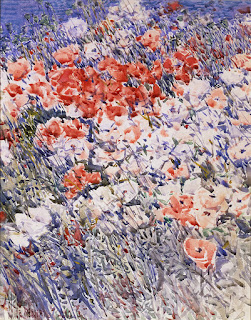 |
|
Augustus Saint-Gaudens, detail of the Robert Gould Shaw Memorial, 1897.
Courtesy of the Saint-Gaudens Memorial.
|
Connecticut-based independent filmmakers Michael Maglaras and Terri Templeton of 217 Films announce a new film project – their seventh in ten years and their sixth “essay in film” – highlighting the arts of the American renaissance…what Mark Twain described as “The Gilded Age.”
The film is titled “America Rising: The Arts of the Gilded Age” and is scheduled for release in December 2016.
Writer and director Michael Maglaras has written, “After the Civil War, American arts and American
 |
|
John Singer Sargent, Madame X
(Madame Pierre Gautreau), 1883-1884.
Oil on canvas. Image © The Metropolitan
Museum of Art. Image source:
Art Resource, NY.
|
artists come into their own on the world stage. In painting, in sculpture, in architecture, and in music, America finds its artistic soul and voice in the work created from the end of the Civil War through the first decade of the 20th century.”
Using the work of painters as diverse as Childe Hassam, Winslow Homer, Thomas Eakins, and John Singer Sargent, “America Rising” creates a portrait of an America re-inventing itself after the tragic events of the Civil War as a major artistic force. With the great public sculptures of Augustus Saint-Gaudens, such as the Robert Gould Shaw Memorial in Boston (referred to in the film by Director Maglaras as “the finest piece of memorial sculpture in America”), “America Rising” focuses on how the rise of the middle class and the even greater rising of industrialists like Henry Clay Frick and others contributed to an America poised, through its art, to commemorate its past and invent its future. In the music of Charles Ives and Charles Tomlinson Griffes we hear an America escaping European musical tradition and embracing Modernism.
 |
|
Childe Hassam, The Island Garden, 1892. Watercolor on paper.
Smithsonian American Art Museum,
Washington, DC / Art Resource, NY.
|
With more than 100 paintings, sculptures, and photographs, as well as film footage of the era (including the only known footage of Mark Twain)…and featuring the on-camera contributions of Professor David Lubin, the Charlotte C. Weber Professor of Art at Wake Forest University, “America Rising” shows us how “The Gilded Age” was the most prolific and ultimately the most vital era in the American arts.
217 Films is an independent film company devoted to the American artistic experience. In 2005, Michael Maglaras and Terri Templeton released their first film “Cleophas and His Own” about the American painter Marsden Hartley’s epic narrative of love and loss. Maglaras both directed and played the role of Hartley in this film. In 2008, they released a second film about Hartley called “Visible Silence: Marsden Hartley, Painter and Poet” – the first-ever documentary on the life of Hartley. In 2010, with their film “John Marin:Let the Paint be Paint!” they established, through the first full-length documentary on this important painter, that John Marin was one of the fathers of American Modernism. These films, among other distinctions, have been shown to acclaim at the National Gallery of Art in Washington, D.C. In 2012, they released “O Brother Man: The Art and Life of Lynd Ward.” In 2013, they released “The Great Confusion: The 1913 Armory Show.” Currently on tour is their latest film “Enough to Live On: The Arts of the WPA” celebrating the ways in which Franklin Roosevelt used the arts to raise the spirits of the American people during the Great Depression.
 |
|
Mark Twain, 1907. Photograph.
Library of Congress Prints and Photographs Division.
|
The Sacramento Bee called Michael Maglaras a film maker of “Bergman-like gravitas.” His films have been described as “virtuoso filmmaking” (National Gallery of Art) “alive and fresh” (Art New England) “elegiac and insightful” (Naples Daily News) “unforgettable” (Journal of American History) and “comparable to that of the widely acclaimed Ken Burns” (New Britain Herald). David Berona, author of Wordless Books, said of “O Brother Man” “This film is stunning.” Judith Regan of Sirius XM called it “magnificent.” The Dartmouth’s review of “The Great Confusion” noted “Michael Maglaras brought the drama of the original show back to life.” Library Journal called it “An excellent analysis of an event that changed the art world.” The Blue Paper called Maglaras’s film on the arts of the WPA “a wonderful celebration of America, her people, and her possibilities.” Maglaras was recently featured in a full-length interview on Conversations from Penn State on Public Television.



